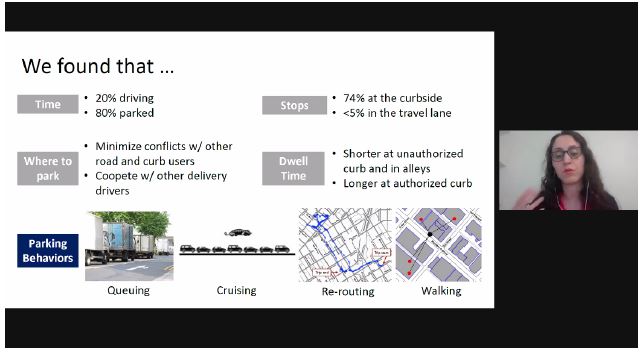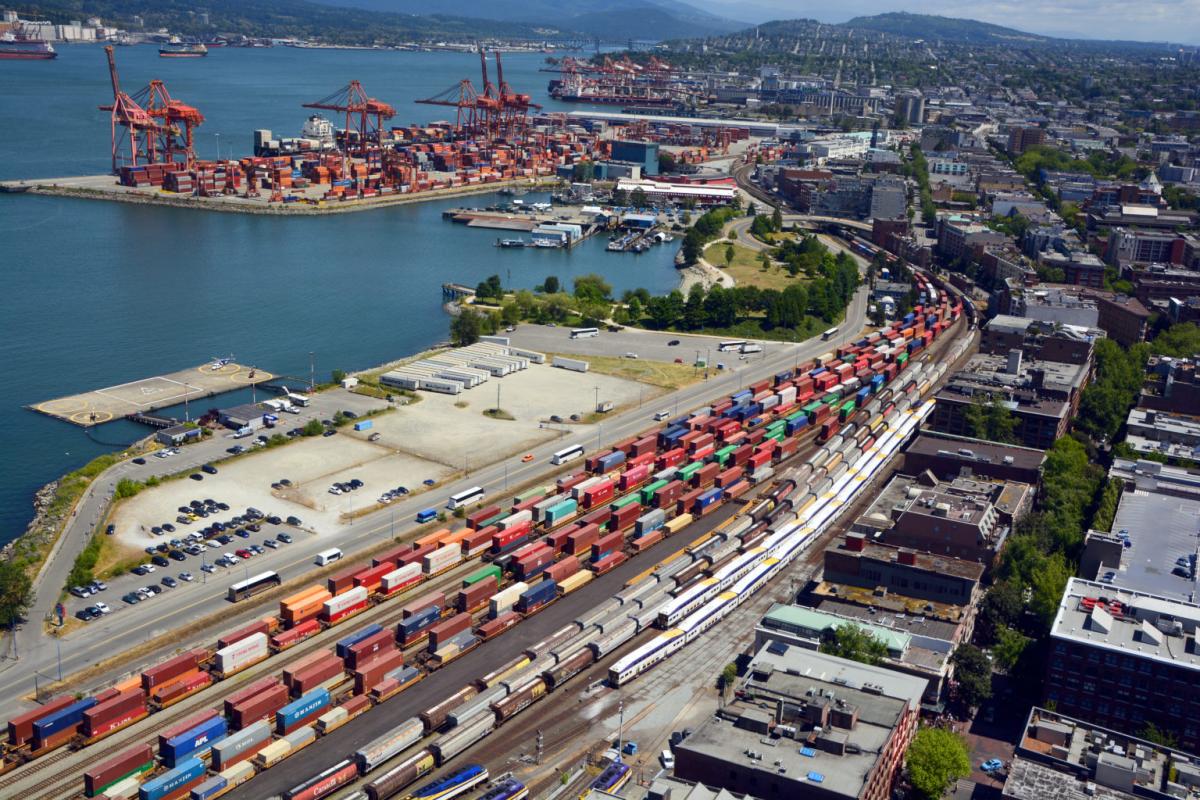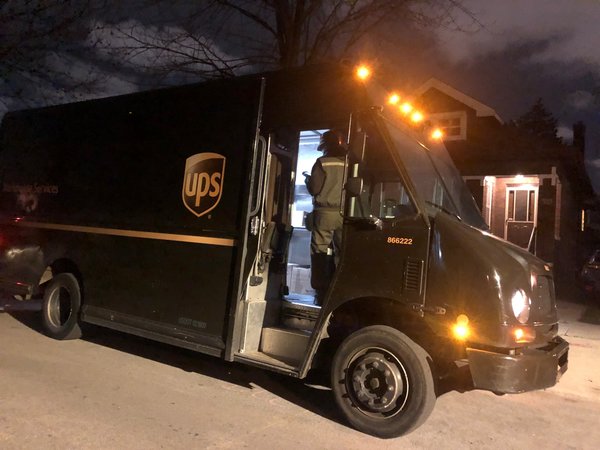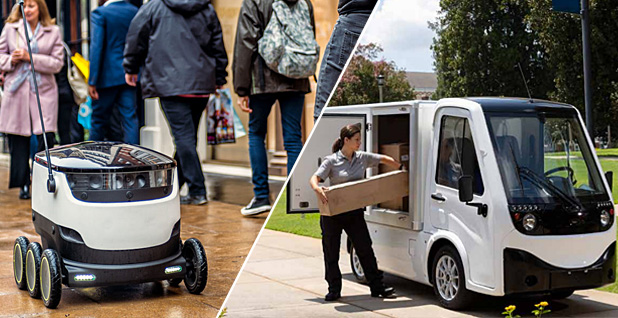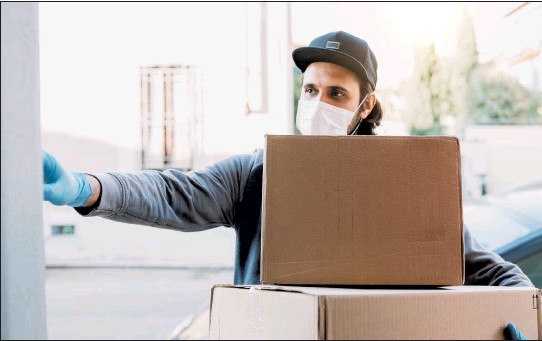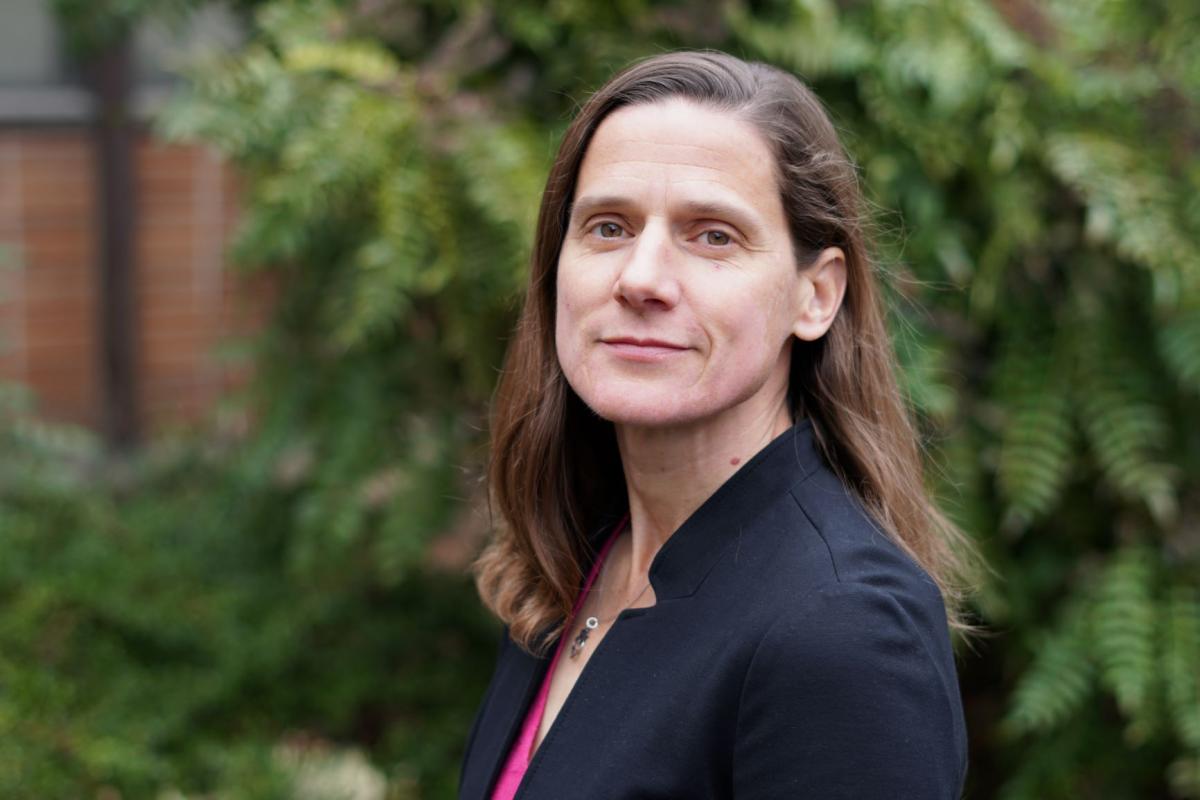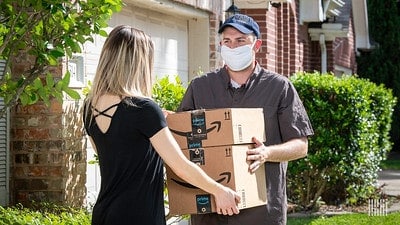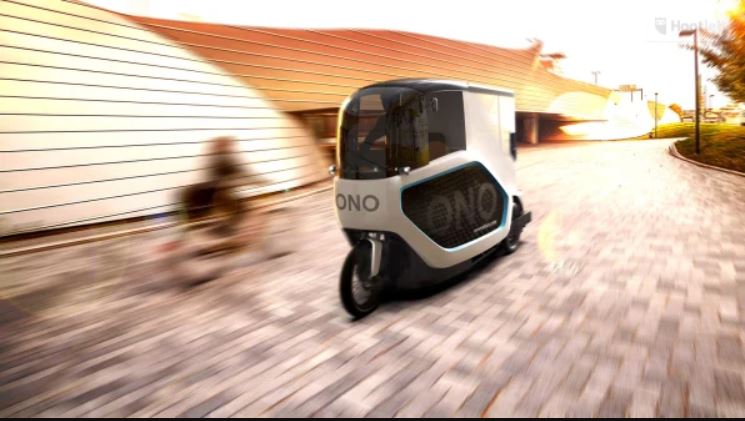In the Media
Andisheh Ranjbari then took the screen to talk about her research into curb behavior, including ride-alongs with delivery drivers to understand their parking behavior; research team members wore GPS devices and shadowed drivers from UPS, Amazon, and other carriers.
Despite the ongoing popularity of online shopping, there is a dearth of “design support” for urban delivery needs, according to researcher Ed McCormack.
Giacomo Dalla Chiara is the author of the award-winning paper on the theme of mobility of urban goods. The solution? It has to be smart.
“Right now, we’re testing a shared mobility hub, sensors to monitor commercial parking, a mobile app to provide drivers with real-time parking availability, and lockers on both public and private property.”
“Overwhelmingly it’s been a story of resilience and adaptation that I think the supply chain and package carrier industry deserves credit for,” Anne Goodchild says.
Anne Goodchild: Overwhelmingly, you know, it’s been a story of resilience and adaptation that I think the supply chain and the package carrier industry deserves a lot of credit.
Stockpiling during the pandemic doesn’t seem to be necessary, says our director Anne Goodchild. Supply chains’ response to the pandemic “have been remarkably adaptable, resilient and creative.”
“In dense urban areas, a bike can actually move more quickly than a car,” says Anne Goodchild.
In October, researchers at the Urban Freight Lab found that delivery trucks spent 28% of their delivery time cruising, looking for a parking space.
While some multifamily building dwellers would prefer the convenience of packages delivered to their door, a secure common pickup area is the practical alternative for residents to safely receive parcels when they’re not home, says Andisheh Ranjbari, manager of the Urban Freight Lab.
By Walther Ploos van Amstel
The Urban Freight Lab has developed an Urban Goods Delivery Toolkit, designed as a one-stop-shop for cities and transportation researchers across the U.S. to improve functionality in the Final 50 Feet segment, increasing load/unload parking space productivity and reducing failed first delivery attempts.
“I developed the group to solve urban freight transportation challenges because I saw a need for partnerships and real collaboration that, as a researcher, I couldn’t access before. I saw a lot of research going on that was quite disconnected from practice and cities. That — not engaging early enough with partners to realize what the real obstacles to those implementations were — looked to me like wasted energy.”
By Linda Baker
A coalition of Southern California government organizations has released an in-depth report examining some of the deleterious impacts associated with last-mile freight transportation.
A primary purpose of the study is “to raise awareness of the complexities, costs, environmental impacts and local community impacts of that final stage of delivery,” said Steven Lambert, a spokesperson for the Southern California Association of Governments (SCAG), the coalition that developed the Last-Mile Freight Study.
One recent study in Seattle found that delivery drivers spend at least 28% of their time looking for parking.
“Drones are remarkably energy efficient machines, particularly when compared to the current fleet of over-the-road trucks,” said Anne Goodchild, a professor at the University of Washington focusing on supply chain and logistics.
